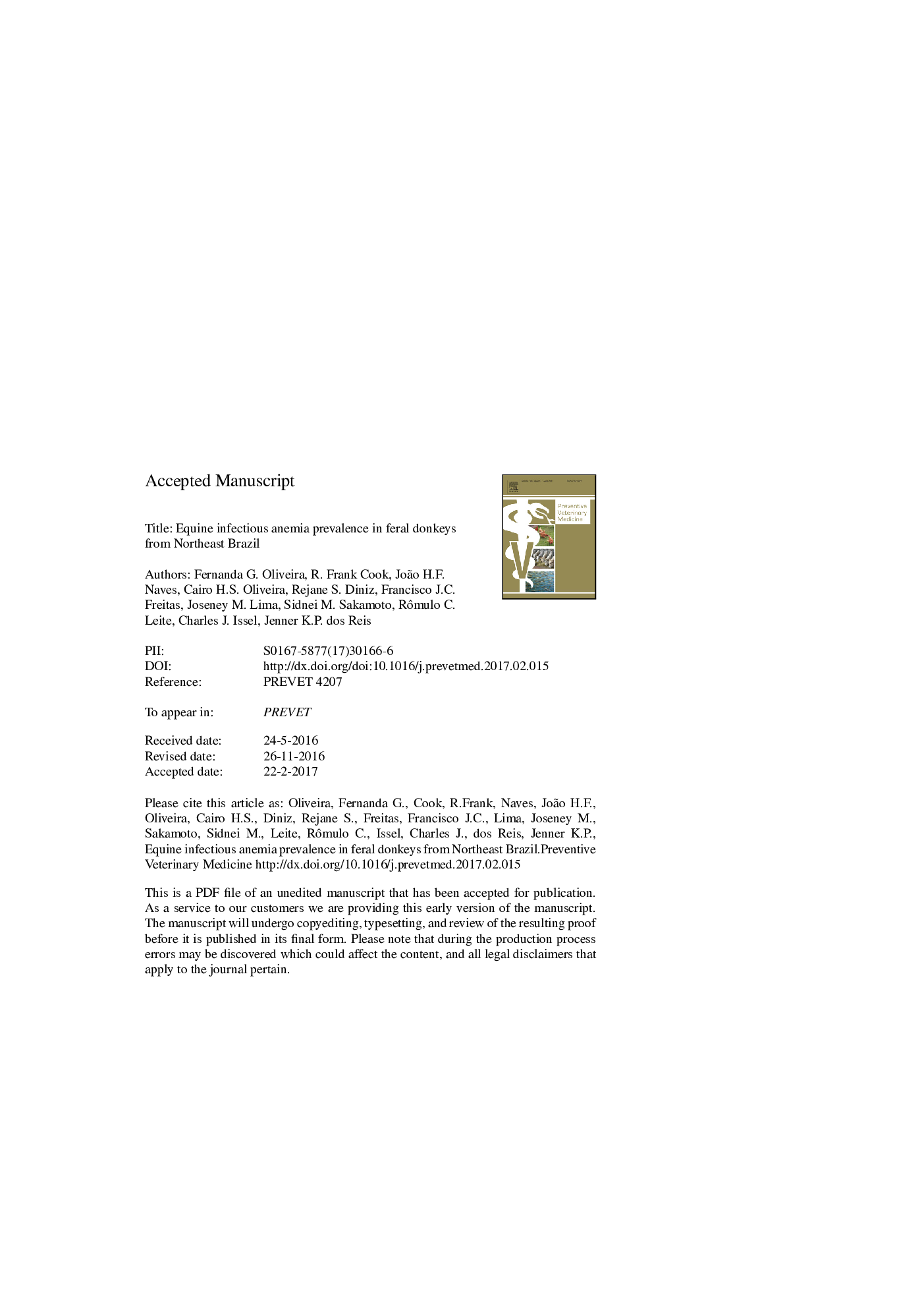| Article ID | Journal | Published Year | Pages | File Type |
|---|---|---|---|---|
| 5543518 | Preventive Veterinary Medicine | 2017 | 23 Pages |
Abstract
Equine infectious anemia virus (EIAV) is an important cause of morbidity and mortality throughout the world. Although the virus infects all members of the Equidae the vast majority of studies have been conducted in horses (Equus caballus) with comparatively little information available for other equid species. Brazil has one of the most abundant donkey (E. asinus) populations of any nation although the economic importance of these animals is declining as transportation becomes increasingly mechanized. As a result, considerable numbers of donkeys especially in the Northeast of the country have been released and allowed pursue an almost feral existence. Consequently, this large and growing population constitutes a significant risk as a reservoir for the maintenance and transmission of important equine infectious diseases such as glanders and equine arteritis virus in addition to EIAV. This study examines the prevalence of EIA in a semi-wild donkey population from Mossoró city, in Northeast Brazil, using AGID followed by cELISA, rgp90 ELISA and immunoblot (IB). Serum samples were collected from 367 donkeys without obvious EIA clinical signs. Subsequent testing revealed seropositive rates of 1.6% (6/367) in officially approved AGID tests, 3.3% (12/367) in cELISA and 14.4% (53/367) in the rgp90 ELISA. However, 88.7% (47/53) of the rgp90 ELISA positive samples were almost certainly false reactions because they failed to react with two or more antigens in IB. Consequently, the rpg90 ELISA has a similar sensitivity to AGID with donkey serum samples. Such high false positive rates have not been observed previously with serum samples from horses. Another highly significant finding is that 56.9% (33/58) of the donkey serum samples tested in IB had reactivity to EIAV p26 only. Although this could result from recent infection with the virus, it has been found that in some equids p26 only reactivity persists for extensive periods of time suggesting exposure to antigens possessing cross-reactive determinants or EIAV strains with envelope glycoproteins that are different from any that have been previously characterized and so undetectable by current IB techniques.
Related Topics
Life Sciences
Agricultural and Biological Sciences
Animal Science and Zoology
Authors
Fernanda G. Oliveira, R. Frank Cook, João H.F. Naves, Cairo H.S. Oliveira, Rejane S. Diniz, Francisco J.C. Freitas, Joseney M. Lima, Sidnei M. Sakamoto, Rômulo C. Leite, Charles J. Issel, Jenner K.P. Reis,
